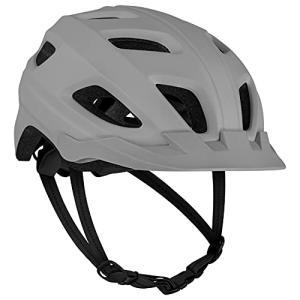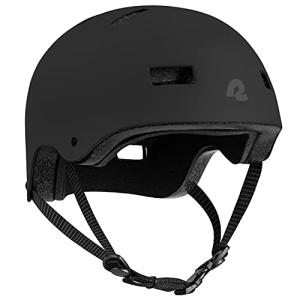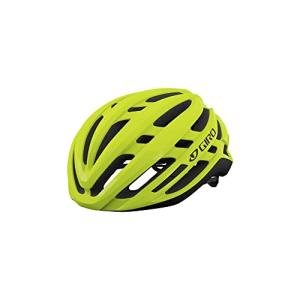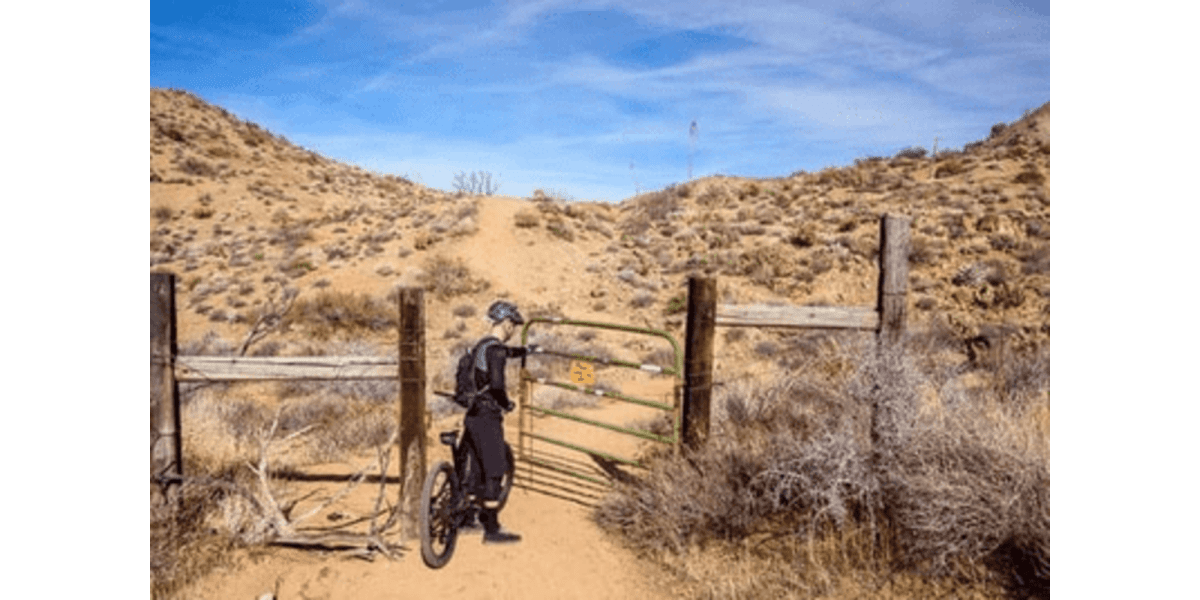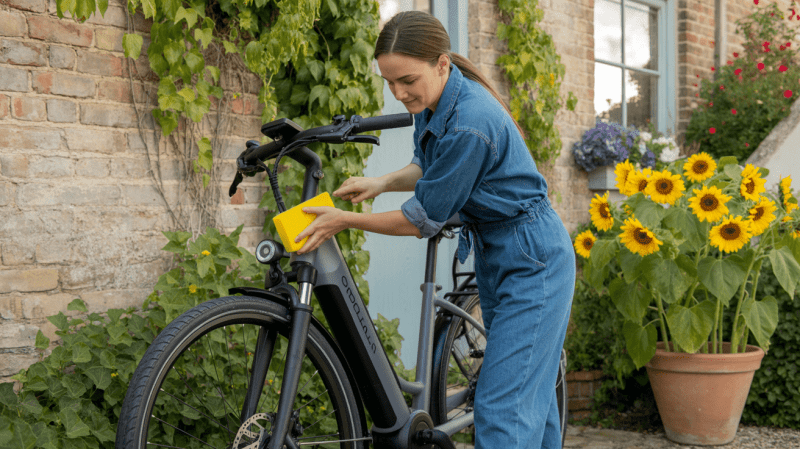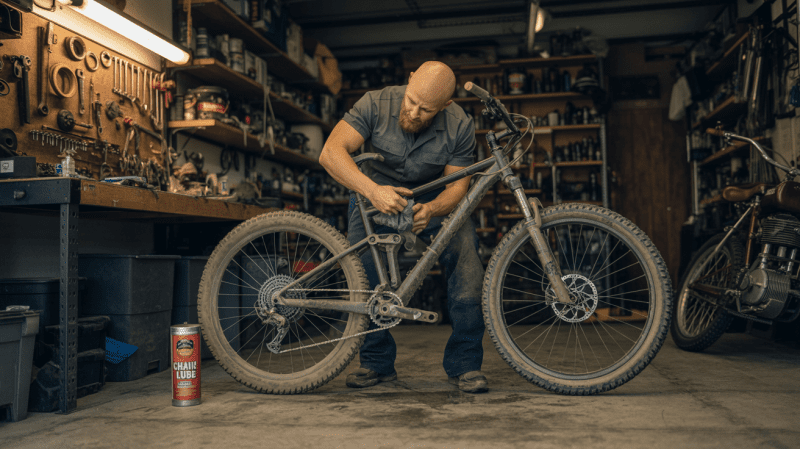Electric mountain bikes are great on trails. They let you ride farther and climb higher with less effort. I've found that these bikes give a boost when pedaling uphill, making tough climbs much easier.

Electric mountain bikes can handle rough terrain just as well as regular mountain bikes, but with added power and range. The motors and batteries are designed to withstand bumps, jumps, and other trail obstacles. Many new models have special features for trail riding, like adjustable geometry and mixed wheel sizes.
E-bikes open up trail riding to more people. Older riders, those recovering from injuries, or folks who aren't super fit can now enjoy mountain biking. It's a fun way to explore nature and get exercise without getting completely worn out.
Key Takeaways
- Electric mountain bikes make trail riding easier and more accessible to a wider range of people
- E-bikes perform well on rough terrain and often have trail-specific features
- The added power and range of e-bikes allow riders to explore more trails and terrain
Exploring Electric Mountain Bikes

Electric mountain bikes are changing the game for trail riding. I've seen more and more of them on the trails lately. They combine the rugged build of a regular mountain bike with an electric motor for extra power.
These e-bikes come in different styles for various terrain. Some are built for smooth trails, while others can handle rocky paths. The motor gives riders a boost when pedaling uphill or over tough spots.
Battery life is key for e-mountain bikes. Most can last several hours of riding. The range depends on factors like:
- Terrain difficulty
- Rider weight
- Assist level used
Prices for e-mountain bikes vary widely. Basic models start around $1,000, but high-end versions can cost over $10,000. More expensive bikes often have stronger motors and longer-lasting batteries.
One big benefit is that e-bikes let more people enjoy mountain biking. Older riders, those recovering from injuries, or less fit individuals can tackle trails they couldn't before.
Some debate exists about e-bikes on trails. Critics worry about potential dangers if batteries fail far from exits. But many parks now allow them, expanding access to nature for more people.
When choosing an e-mountain bike, I consider the motor power, battery range, and frame durability. It's also important to match the bike style to the type of trails I plan to ride most often.
Advantages of Electric Mountain Bikes on Trails

Electric mountain bikes offer some key benefits for trail riding. They can make challenging terrain more accessible and enjoyable for many riders.
Assisted Climbing Capabilities
The motor on an electric mountain bike gives me a boost when climbing steep hills. I can tackle tough uphill sections with less effort. This lets me save energy for technical descents and longer rides.
The assist also helps me maintain a steadier pace on climbs. I don't get as winded or have to stop as often to catch my breath. This makes the overall riding experience smoother and more fun.
Some e-bikes have different power modes. I can adjust the assist level based on the trail difficulty or how much help I want.
Increased Trail Accessibility
E-bikes open up more trails to more riders. I can explore routes that were once too difficult due to distance or elevation gain.
Older riders or those with less fitness can now enjoy trails they couldn't before. The motor assist bridges the gap in physical ability.
E-bikes also let me cover more ground in less time. I can see more of the trail network in a single outing. This is great for sampling new areas or fitting in longer rides.
Rider Fatigue Reduction
The motor assist on an e-bike helps reduce overall fatigue on long rides. I don't tire out as quickly, so I can ride for longer periods.
My legs stay fresher throughout the ride. This helps me maintain better control and proper form, especially on technical sections later in the route.
With less fatigue, I can focus more on enjoying the scenery and trail features. The ride becomes more about fun and less about just making it to the end.
Technical Aspects of Trail Riding with Electric Mountain Bikes

Electric mountain bikes offer unique features that impact trail riding. These bikes combine traditional mountain bike design with electric assist technology, creating a new riding experience on rough terrains.
Handling and Maneuverability
Electric mountain bikes are heavier than regular bikes due to their motors and batteries. This extra weight can make them more stable on descents. But it also means they're harder to lift over obstacles.
The added weight is often balanced by a lower center of gravity. This helps with cornering and stability on tricky trails. Many e-MTBs now come with adjustable geometry. This lets riders fine-tune their bike's handling for different trails.
Some e-MTBs use mixed wheel sizes. A larger front wheel improves roll-over ability, while a smaller rear wheel enhances maneuverability. This setup can be great for technical trails.
Battery Range and Power
Battery capacity is crucial for e-MTB trail riding. It's measured in watt-hours (Wh). A higher Wh number means more range. Most e-MTBs have batteries ranging from 500Wh to 700Wh.
Terrain, rider weight, and assist level all affect battery life. Uphill climbs drain batteries faster than flat trails. Some e-MTBs have removable batteries. This allows riders to carry spares for longer trips.
Many e-MTBs offer multiple power modes. Eco mode extends battery life but provides less assist. Boost mode gives maximum power but drains the battery quickly. Smart power management systems help balance performance and range.
Motor Performance on Rough Terrains
E-MTB motors are designed to handle tough trail conditions. They provide instant torque, which is great for climbing steep sections. Most high-end e-MTBs use mid-drive motors. These are centered in the bike frame for better balance.
Motors like the Bosch Performance Line CX or Shimano EP8 are built for trail use. They offer high torque output while remaining lightweight. Some motors have special trail modes that provide a more natural riding feel.
Motor responsiveness is key on technical trails. The best e-MTB motors quickly adjust power based on pedal input. This helps maintain traction on loose or slippery surfaces. Some systems even cut power during jumps to prevent unwanted acceleration.
Comparing Electric and Traditional Mountain Bikes

Electric and traditional mountain bikes have key differences in physical demands, speed capabilities, and maintenance needs. Let's explore how they stack up against each other.
Physical Demand Comparison
Electric mountain bikes make riding easier on my body. The motor helps me pedal, so I don't get as tired on long rides or steep climbs. This is great if I'm not in top shape or want to ride farther.
Traditional bikes give me a tougher workout. I have to use more of my own strength, especially going uphill. This builds my fitness faster.
E-bikes let me tackle harder trails that I might not attempt on a regular bike. But some riders feel they miss out on the full physical challenge.
Speed and Agility
E-bikes are faster on climbs. The motor boost helps me zoom up hills 20% quicker on average. This extra speed can be really fun and lets me cover more ground.
On flat terrain and downhills, regular mountain bikes can be just as fast or faster. They're often lighter and more nimble for quick turns.
E-bikes accelerate faster from a stop. This helps on technical uphill sections where I need a burst of speed.
Traditional bikes may handle better in tight spots due to their lighter weight. They can be easier to maneuver around sharp corners or over obstacles.
Maintenance and Upkeep
E-bikes have more parts that can break or wear out. The battery and motor need regular checks. I have to remember to charge the battery before rides.
Traditional bikes are simpler machines. They have fewer components that can fail, which often means less time in the shop.
E-bikes cost more to fix when something goes wrong with the electrical system. But they may need less frequent drivetrain maintenance since the motor reduces wear on those parts.
Both types need regular cleaning, especially after muddy rides. Keeping pivot points lubed and tires at the right pressure is key for both.
Environmental Impact and Trail Sustainability
Electric mountain bikes have both positive and negative effects on the environment and trails. Let's look at the eco-friendly aspects as well as concerns about trail wear and tear.
Eco-Friendly Aspects of Electric Bikes
Electric mountain bikes can be good for the environment in several ways. They don't produce exhaust emissions like gas-powered vehicles. This helps keep the air clean on trails and in nature areas. E-bikes also make less noise than motorized vehicles, so they don't disturb wildlife as much.
I've noticed e-bikes allow more people to enjoy trails who might not be able to ride a regular bike. This can build support for protecting natural areas. E-bikes also let riders cover more ground, potentially reducing car trips to trailheads.
Trail Erosion and Preservation Concerns
There are valid worries about e-bikes causing more trail damage. E-bikes are heavier than regular bikes, which can lead to deeper ruts and more erosion on trails. The extra power also lets riders go uphill easier, increasing traffic on climbs that used to see less use.
Some land managers fear e-bikes will bring too many new riders to trails. This could cause overcrowding and faster trail wear. There's also concern that e-bikes might go off-trail more often, harming plants and wildlife habitats.
I think good trail design and maintenance are key. Proper drainage and surface materials can help trails hold up to increased e-bike traffic. Education on responsible riding is also important to minimize negative impacts.
User Experience and Community Feedback
E-mountain bikes have sparked mixed reactions among riders and trail communities. People's experiences vary widely, shaping different views on their place in the sport.
First-Hand Rider Testimonies
I've talked to many e-mountain bike users who rave about their experiences. They tell me these bikes let them ride longer, tackle tougher climbs, and explore new areas. One rider said, "My e-bike breathed new life into my riding. I can keep up with my kids now!"
But not all feedback is positive. Some riders complain about the bikes' weight when the battery dies. Others mention feeling judged by traditional bikers on the trails. A few have shared stories of technical issues with motors or batteries mid-ride.
Many new e-bikers say there's a learning curve. The extra power takes getting used to, especially on tight turns or steep descents.
Community and Culture Integration
E-mountain bikes have changed trail dynamics. I've noticed more diverse groups riding together now. Families and friends with different fitness levels can enjoy trails as a unit.
But this shift hasn't been smooth everywhere. Some bike parks and trail systems have banned e-bikes, citing safety concerns. Trail builders are adapting designs to handle increased traffic and speed.
Local bike shops report growing interest in e-mountain bikes. Many now offer demos and guided rides to help new users get comfortable. Some areas have started e-bike specific events and races, building a new subculture within mountain biking.
Clubs and advocacy groups are working to update trail policies. They're pushing for clear rules on where e-bikes can go and how they should be used responsibly.
Safety Considerations for Electric Mountain Biking
Electric mountain bikes can be a blast, but safety should always come first. I've learned some key things to keep in mind when riding an e-MTB on trails.
Proper gear is essential. I always wear a helmet, gloves, and protective eyewear. Knee and elbow pads add extra protection on rough terrain.
Speed control is crucial. E-bikes can reach higher speeds more easily than regular bikes. I make sure to ride at a safe pace, especially on unfamiliar trails.
Trail etiquette matters. I yield to hikers and non-electric bikers. It's important to be considerate of others sharing the trails.
Battery management is key. I check my battery level before rides and bring a spare for longer trips. Running out of power mid-ride can be dangerous.
Maintenance is vital. I regularly inspect my e-MTB's brakes, tires, and motor. Well-maintained bikes are safer and more reliable on the trails.
Knowing local rules is a must. I always check if e-bikes are allowed on specific trails before riding. Following regulations helps keep trails open for everyone.
Legal and Regulatory Considerations
I've found that electric mountain bike regulations can vary widely between different areas. The U.S. Forest Service recently issued new rules about e-bikes on National Forest lands.
Class 1, 2, and 3 e-bikes are allowed on motorized trails and roads in national forests. But their use on non-motorized trails is still being decided case-by-case.
Some forests may reclassify non-motorized trails as motorized to allow e-bikes. This has caused debate among trail users and organizations.
The International Mountain Bicycling Association supports some e-bike access but doesn't want all trails reclassified as motorized.
Local forest officials can consider new e-bike opportunities on non-motorized trails. They'll look at factors like:
- Environmental impacts
- Trail conditions
- User conflicts
- Safety concerns
I've noticed that e-bike policies are evolving. It's important to check current rules before riding on any trail. Rules may differ between:
- National forests
- State parks
- Local trail systems
- Private lands
As an e-bike rider, I make sure to follow all posted signs and regulations. This helps maintain good relationships with other trail users and land managers.
Cost Analysis and Value Proposition
Electric mountain bikes come with a higher price tag than regular bikes. Most quality e-MTBs start around $3,000 and can go up to $10,000 or more for high-end models.
The extra cost pays for the motor, battery, and electronics that give e-bikes their power assist. More expensive models often have better components, lighter frames, and longer-range batteries.
I've found that e-MTBs can provide good value despite the higher upfront cost. They let me ride farther and tackle tougher trails than I could on a regular bike. This expands the range of riding I can do.
For frequent riders, an e-MTB may be worth the investment. It can replace car trips for some errands and provide years of fun on the trails. The motor assist also helps extend the riding season.
Some key factors in the value equation:
- Expected frequency of use
- Local trail access
- Physical fitness/riding goals
- Budget
While pricey, e-MTBs open up new riding possibilities. For the right rider, they can deliver great value and enjoyment on the trails. Careful research helps ensure you get an e-MTB suited to your needs and budget.
Future Trends in Electric Mountain Biking
I expect to see some exciting developments in electric mountain biking in the coming years. Lighter and more powerful motors will likely be a major focus. This will help e-bikes feel more like traditional mountain bikes while still providing assistance.
Battery technology is also set to improve. I anticipate longer ranges and faster charging times. This will let riders go further without worrying about running out of juice.
Integration of smart features is another trend I'm keeping an eye on. Things like:
• GPS navigation • Fitness tracking • Smartphone connectivity
These could enhance the riding experience and provide useful data.
Frame designs may evolve to better accommodate electric components. I think we'll see more bikes with seamlessly integrated batteries and motors.
Suspension systems tuned specifically for e-bikes will likely become more common. This will help handle the extra weight and power of electric systems.
Improved accessibility is also on the horizon. More affordable options and bike-sharing programs could bring e-mountain biking to a wider audience.
As technology advances, I expect electric mountain bikes to become increasingly capable on technical trails. This could open up new riding possibilities for many people.
Frequently Asked Questions
Electric mountain bikes bring up many questions for riders. I'll cover the key points about their benefits, performance, and use on trails. Here are answers to some common questions:
What are the benefits of using an electric mountain bike for trail riding?
Electric mountain bikes let you ride farther and tackle tougher climbs. The motor helps you conserve energy on long rides. You can explore more trails in less time. They're great for riders of different fitness levels to ride together.
How do electric mountain bikes perform on steep and challenging terrain?
E-bikes handle steep terrain well. The motor gives extra power on tough climbs. Good e-bikes have strong brakes and suspension for control on descents. Riders still need skill for technical sections.
Can electric mountain bikes be used on all types of mountain bike trails?
Many trails allow e-bikes, but not all. Some parks have rules about motor-assisted bikes. It's best to check local regulations before riding. Some trails may be too technical or narrow for e-bikes.
What is the price range for quality electric mountain bikes suitable for trail use?
Quality e-mountain bikes start around $3,000. High-end models can cost $7,000 or more. Mid-range options between $4,000-$6,000 offer good value. Prices vary based on components and battery size.
Why might some trails restrict the use of electric mountain bikes?
Some trails ban e-bikes to protect the environment. They worry about increased trail damage or conflicts with other users. Safety concerns on crowded trails are another reason. Some feel e-bikes don't fit with traditional mountain biking.
What should one consider when looking for the best trails for electric mountain bikes?
Look for wider trails with good climbs. Flowy singletrack works well for e-bikes. Avoid very technical or rocky trails at first. Consider battery range when planning routes. Find areas that welcome e-bikes to avoid conflicts.
DISCLAIMER
This document is provided for general information purposes only and should not be relied upon as providing legal advice, technical, or specific operational guidance to the reader, whether as to the practices described in the document or the applicable legal requirements and regulations. justelectricbikes.com expressly disclaims any responsibility for liability arising from or related to the use or misuse of any information in this document.
